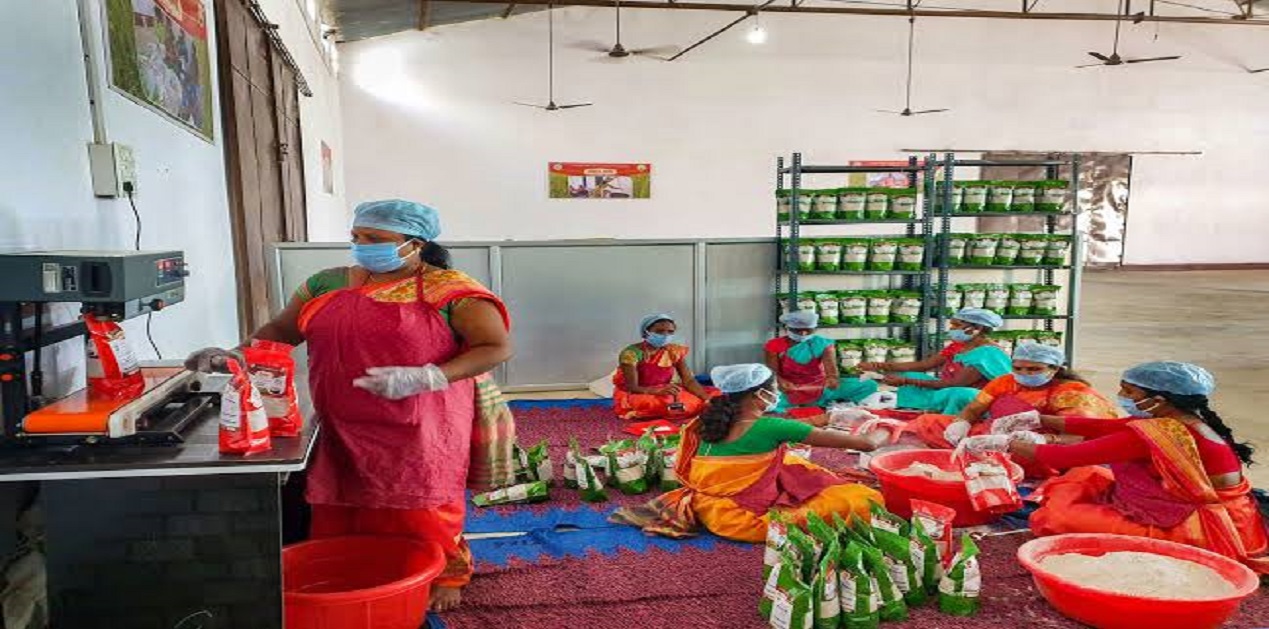Millets were one of the first crops to be cultivated in India. Research indicates that millets were eaten during the Indus-Sarasvati culture (3,300 to 1300 BCE). Half of the people in Asia and Africa even now rely on millets as their main source of cereals. There are currently over 6,000 types of millet across the world. Millets are frequently called “nutri-cereals” or “superfoods” because of their high nutritional value, resistance to climate change, low resource requirements, and high nutritional value. The role of millets in encouraging sustainable consumption and improving food and nutrition security is highly significant. In 2021, global millet production was 30.1 million tonnes, with India accounting for 44 per cent of the total production.
Because of the adverse impacts of COVID-19 on global food security, India recognised and advocated the use of millets. In this direction, the Indian government proposed declaring 2023 the International Year of Millets. As a result, the Food and Agriculture Organisation and the United Nations designated 2023 as the International Year of Millets (IYM2023) to raise awareness about their health and nutritional benefits.
A silent revolution is already unfolding in Gumla, a small district in Jharkhand, around 100 kilometers from the state capital Ranchi. Gumla plagued by abject poverty and Naxalite militancy, is now widely recognised for its Ragi Revolution. Ragi-based snacks that can aid in preventing malnutrition have been grown and marketed. Sushant Gaurav, a young administrator who wants Gumla to be the Ragi capital of eastern India, is the inspiration behind the new agro-industry developing in this remote area. Through the National Seed Corporation, Sushant Gaurav, the deputy commissioner for the Gumla district, secured the high-quality seeds necessary to start ragi cultivation.
In the past, rain-fed agriculture in Gumla resulted in the production of just one crop: rice. However, ragi cultivation has the potential to transform the agricultural pattern in this region and make it more sustainable. Ragi cultivation was initially limited to 1,600 acres and then increased to 3,600 acres. The first ragi processing facility in Jharkhand was created with the acquisition of Sakhi Mandal Samuh (a women’s self-help group), whose net output increased by 300 per cent. Due to its high protein, iron, and calcium content, ragi laddus, snacks, and flour are made to help fight anaemia and malnutrition.
Sushant Gaurav’s work in Gumla has been chosen for the Prime Minister’s Awards for Excellence in Public Administration, which honours outstanding performance by government officials throughout India. On April 21, 2023, PM Modi presented him with this honour. This is the first time a district in Jharkhand has been chosen for this award. In an interview, Mr. Gaurav stated that laddus made of ragi are being given to youngsters to combat malnutrition, along with leafy greens and vegetables made from 52 designated ingredients, including moringa powder and curry leaves, in mid-day meals to supplement nutrition at a low cost.
Additionally, a door-to-door survey of schoolchildren and breastfeeding mothers was conducted. It was identified that they suffered from severe, moderate, and medium anaemia and malnutrition; therefore, preventive and therapeutic measures were needed. A multi-project strategy was used to combat anaemia, aiming to identify and correct it early in nursing, pregnant, and adolescent mothers. Over 400 model Anganwadi centres were fitted with digital haemoglobin meters, the cutting-edge blue malnutrition treatment card (MTC), height growth charts and follow-up cards. Mr. Gaurav claimed that there is a focus on education, fitness, and indoor stadiums, with many schools now having IT facilities.
This transformation has been aided by improvements in the local agriculture industry. In the district, where agriculture provides the primary livelihood for over 90 per cent of small and marginal farmers and 85 per cent of the population, officials claim that solar lift systems, drip irrigation, and pond rehabilitation have contributed to the increase in irrigated land. In addition to expanding the area under mango cultivation to 9,492 acres and encouraging organic farming on 5,000 acres, the administration has arranged experimental projects to grow pear, dragon fruit, and strawberry crops.
The Gumla district's Ragi Revolution has made an impressive contribution to India's initiatives to promote millets as sustainable food. Moreover, it showcases the critical role of the efforts of Indian civil servants to bring about change in society. Many more stories like these will be generated as a result of the Government of India's Mission Karmayogi Initiative, which aims to establish a future-ready public sector with the appropriate attitude, skills, and knowledge in line with New India's vision.
(The paper is the author’s individual scholastic articulation. The author certifies that the article/paper is original in content, unpublished and it has not been submitted for publication/web upload elsewhere, and that the facts and figures quoted are duly referenced, as needed, and are believed to be correct). (The paper does not necessarily represent the organisational stance... More >>
Image Source: https://encrypted-tbn0.gstatic.com/images?q=tbn:ANd9GcTT12aJ9vsC4rMi2BNNkt9EYujgMX1U9XnF7w&usqp=CAU











Post new comment